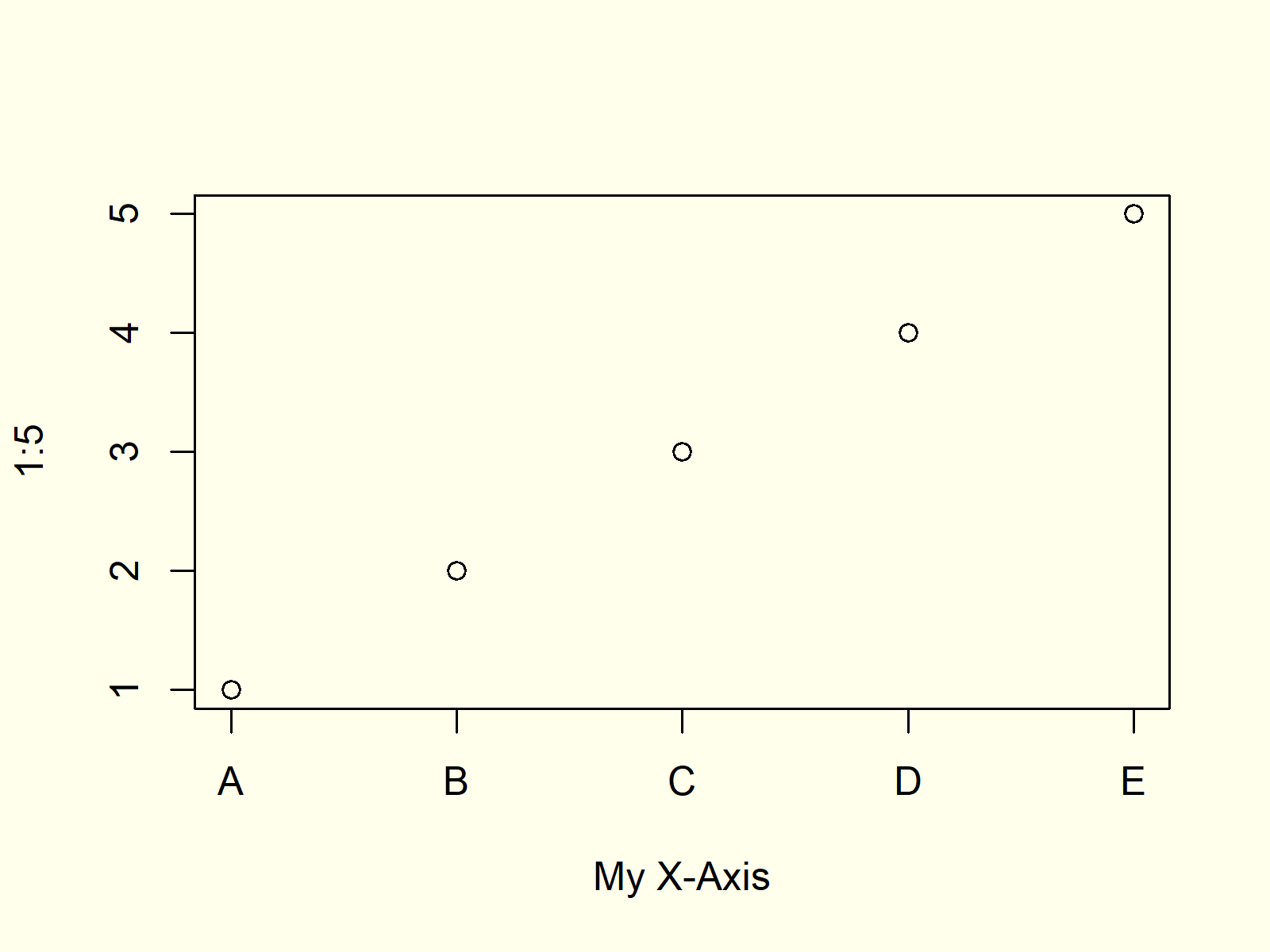


Setting the title of the graph using the function ().As we have generated the data points we use () to plot the data on the graph with respective labels and color of the curves.Using trigonometric function, to generate y-axis data points numpy.sin(x) and s(x) store it in list a and b respectively.Using numpy.arange() function to generate a list of evenly space number between 0 to 2π and store it in the list x.Syntax: For Changing the fontsize of the label We can change its font size by passing the parameter font size in the xlabel() and ylabel() functions. Sometimes labels size is not scaled according to the graph. We will discuss these parameter mentioned below. In matplotlib, we can customize the axis label by changing their color, position, size, etc.
Rename x y label on plot in r how to#
How to Customize Axis Labels in Matplotlib It changes the label's size, font, and size. To change the horizontal alignment of the label Spacing in points from the Axes bounding box including ticks and tick labels.ĭefault value is 'center', which changes the label's position. Set the text of the label.ĭatatype of this parameter is float, and the default value is 4.0. (ylabel, fontdict=None, labelpad=None, *, loc=None, kwargs)ĭatatype of this parameter is a string. (xlabel, fontdict=None, labelpad=None, *, loc=None, kwargs) Syntax and parameter of X and Y axis label Function required for labels in matplotlib is: () for adding label on x-axis and () for adding label on y-axis. So, how do we mention these variables when we plot the graph on matplotlib? Axis labels in matplotlib are used to mention variable on axis. When we plot data in matplotlib on the X-Y plane, we sometimes need to define the variables on the axes, like a speed-time graph where speed is on the y-axis and time is on the x-axis. Finally, we shall discuss some examples to understand the topic better.We will discuss the properties of the axis labels in matplotlib like color, font size, rotation, visibility, and font-weight.We can add labels to the graph using () or ().In this article, we will discuss axis labels in matplotlib.In matplotlib's pyplot library there are two function () and () are used to add axis labels in matplotlib which take atleast one parameter(string) as label to the axis. We will discuss all the functions to understand better the concept and which function to use according to the scenario. Using the xlabel() and ylabel() function, we can add the axis label on a figure and customize the axis labels' text properties. This matches the previous plot.Matplotlib provides the libraries and function to add axis labels on a figure. You can also specify the labels in a vector outside of the scale_discrete() function if you’d like: library(ggplot2) The x-axis labels now match the labels that we specified using the scale_x_discrete() function. Scale_x_discrete(labels=c(' label1', ' label2', ' label3', ' label4')) By default X-axis label is set to x, and Y-axis label is set to y.

#create bar plot with specific axis order To set labels for X and Y axes in R plot, call plot () function and along with the data to be plot, pass required string values for the X and Y axes labels to the xlab and ylab parameters respectively. To change the x-axis labels to something different, we can use the scale_x_discrete() function: library(ggplot2)

If we create a bar plot to visualize the points scored by each team, ggplot2 will automatically create labels to place on the x-axis: library(ggplot2) Suppose we have the following data frame in R that shows the points scored by various basketball teams: #create data frameĭf <- data. The following example shows how to use this syntax in practice. You can use the scale_x_discrete() function to change the x-axis labels on a plot in ggplot2: p + scale_x_discrete(labels=c(' label1', ' label2', ' label3'.


 0 kommentar(er)
0 kommentar(er)
